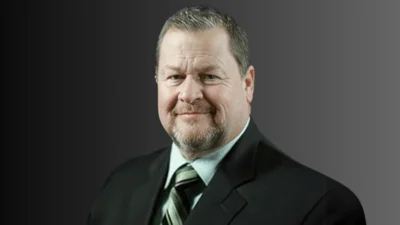How to minimize back pain as you age
Whether it’s from an old sports injury or a new injury from moving heavy furniture, lower back pain is nothing to ignore.
Research continues to show that lower back pain is the leading cause of disability worldwide. So, it’s important to stay aware of lower back pain and do whatever you can to avoid or minimize it – especially as you age.
Rest can often help, but it’s also important to keep moving. “People are often surprised to hear that a sedentary lifestyle can lead to more pain,” says Dr. Mansoor Aman, an interventional pain management physician at Aurora Health Center – Oshkosh. “When you don’t move around much, the muscles that support your spine get weaker and may stiffen up. That makes low back pain even worse.”
In addition to a sedentary lifestyle, conditions like arthritis, smoking, osteoporosis (weakening of the bones of the spine), and wear and tear on the vertebral discs (cushions between the bones of the spine) all take their toll on your lower back.
To ease or help prevent lower back pain as you get older, Dr. Aman suggests gentle, low-impact exercises like walking, swimming or yoga. Strength training for the muscles of the back also can help. Even doing some simple stretches can help increase blood flow to the area and promote healing.
Sometimes, people who have lower back (or lumbar) pain are reluctant to exercise because of previous experiences where exercising made their back hurt more. Dr. Aman recommends getting instruction from a physical therapist or another practitioner who has experience working with older people. They’re trained to offer exercises that will help you build strength without causing more pain.
To keep pain during exercise to a minimum, make sure to warm up first and stay hydrated. If physical therapy has been prescribed, bear in mind that treatments often start with massage or the application of heat to help loosen stiff muscles and ease pain before any stretching or strengthening exercises.
Dr. Aman sees many people over 50 with lower back pain and sometimes prescribes medications to help reduce inflammation, muscle spasms and pain. He says interventional pain physicians have nonsurgical and minimally invasive treatments available that can provide long-term pain relief to help you do the exercises needed to recondition and strengthen the muscles that support your back.
Here are some of the most common causes of lumbar pain and common treatments that can provide pain relief for about 12-18 months.
- Lumbar facet pain (arthritis): Lumbar medial branch nerve diagnostic blocks followed by radiofrequency ablation.
- Lumbar spinal stenosis (spinal canal or nerve pinching): Lumbar epidural steroid injection or minimally invasive lumbar decompression (known as the MILD Procedure).
- Degenerative disc disease or vertebrogenic pain: Intradiscal allograft injection or basivertebral nerve ablation (Intracept procedure). Both of these treatments have been developed in the last year.
“Chronic pain can be frustrating and overwhelming at times,” says Dr. Aman. “Continue to seek treatments that will help you get back to doing things you enjoy.”
Original source can be found here




 Alerts Sign-up
Alerts Sign-up